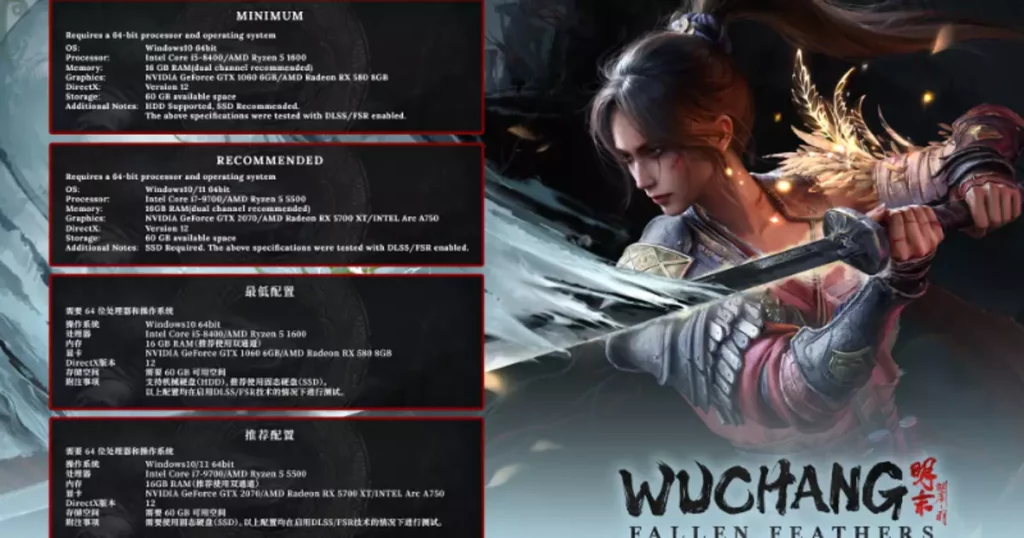Wuchang endeavors to stand out by weaving Chinese mythology and historical elements into a complex tapestry that elevates its narrative above the typical hack-and-slash fare. This ambition is commendable but also fraught with peril. In an industry saturated with derivative titles, turning cultural authenticity into a compelling game requires balancing reverence with innovation. Wuchang visibly takes on this challenge, blending traditional aesthetics with gothic horror, aiming to cultivate a distinctive world that piques curiosity and garners respect. Yet, the risk lies in whether this fusion remains authentic or devolves into superficial novelty. The game’s success hinges on its ability to translate deeply rooted cultural symbols—such as the recurring motif of feathers and mystical techniques—into engaging mechanics that resonate not just with players seeking a fantasy adventure but also with those craving an intellectually stimulating experience rooted in meaningful lore.
While the game’s narrative depth and branching choices are promising, they potentially threaten to become mere gimmicks without cohesive storytelling. Player agency is powerful, but it must be executed seamlessly; otherwise, it risks feeling contrived or disconnected. Wuchang’s layered approach, emphasizing moral dilemmas and mysterious pasts, offers a refreshing departure from the predictable, offering gamers an opportunity to contemplate the societal decay wrought by the “Feathering” plague. Its cultural authenticity could have been its greatest strength if handled with care, but there is always a danger that attempts at cultural reinterpretation are superficial or pandering, trivializing sacred traditions. The developers’ efforts to refine aesthetic choices—moving away from overly gothic bloodbaths to a more balanced visual palette—are wise, suggesting a sincere intent to respect Chinese heritage while delivering a visceral experience.
Gameplay Mechanics and Accessibility: A Double-Edged Sword
From a mechanical perspective, Wuchang promises a strategic, layered combat system built around weapon enchantments, ability upgrades, and a resource intriguingly named “Red Mercury.” These elements hint at a level of tactical depth that could elevate Wuchang above mindless slashing, providing a gameplay loop that encourages mastery and creative combat sequences. However, the game’s claim to accessibility—particularly with minimal system requirements—raises critical questions about whether it can truly deliver on visual fidelity without sacrificing quality, especially with features like DLSS 4 support. In an era where cutting-edge graphics often demand exorbitant hardware investments, Wuchang’s approach of catering to a broader audience by maintaining modest specs is a refreshing departure from the industry norm.
Yet, the line between inclusivity and superficial performance optimization is thin. If the game’s visuals and combat feel underwhelming compared to what the hardware can genuinely support, it may undermine player immersion and satisfaction. The true test will be whether the developers can leverage these technology promises to create a visually compelling yet accessible experience. This strategy, in a way, aligns with a center-right ideological stance that champions technological fairness—ensuring premium experiences aren’t confined to the elite few who can afford relentless hardware upgrades. It signifies a step toward a more democratized gaming landscape where skill and storytelling take center stage over hardware bragging rights.
Cultural Depth Versus Commercial Cliché
One of Wuchang’s more admirable, albeit risky, ambitions is its attempt to sidestep the tired gothic clichés that often saturate horror-themed action games. Instead, it opts for a more refined aesthetic that emphasizes traditional Chinese artistic influences, eschewing excessive blood and gore for mysticism and ritualistic motifs. This move could serve as both a shield against clichés and a platform for authentic cultural storytelling—if executed convincingly. The balance between entertainment and cultural fidelity is delicate; when mismanaged, it risks devolving into exoticism or superficiality, reducing profound traditions into mere background décor.
The depiction of Shu, the game’s setting, and the overarching metaphor of feathers and societal decay symbolize transformation and mortality—universal themes wrapped in distinctly Chinese symbolism. Such narrative depth offers a unique platform to explore moral ambiguity and societal collapse, resonating with players who appreciate storytelling that goes beyond surface-level violence. However, to transcend mere thematic backdrop, Wuchang must embed these concepts into gameplay and decision-making mechanics meaningfully. Otherwise, the narrative runs the risk of feeling like a stylistic veneer rather than an integral aspect of the experience.
Player Choice and Narrative Ambition
Where Wuchang shows real promise is in its emphasis on player choices that influence multiple endings and story pathways. This branching narrative approach promotes replayability and deepens engagement, encouraging players to explore different moral and strategic outcomes. It implies that player agency is not an afterthought but central to the experience—a commendable goal in a genre often criticized for its linear storytelling.
This design philosophy elevates Wuchang from being a mere combat simulator to an interactive narrative that demands thoughtful decision-making. The metaphysical resource “Red Mercury” and its implications on combat and narrative branching suggest a game where strategic choices extend beyond fair fights to moral dilemmas and character development. Such complexity can lead to a more mature, reflective experience—how players navigate these moral landscapes could be the game’s ultimate distinguishing feature.
However, the risk remains that these branching pathways could become superficial or poorly balanced, leading to frustration or dilution of the story’s thematic core. It requires meticulous narrative design and testing—something many ambitious titles overlook—to truly capitalize on this potential. If Wuchang manages to do this effectively, it could carve out a unique space within the crowded action-RPG market, attracting players who seek more than idle entertainment but a compelling exploration of morality and cultural identity.
This critique, while recognizing Wuchang’s admirable ambitions and promising mechanics, remains skeptical about whether it will ultimately deliver a cohesive, culturally respectful, and gameplay-rich experience. Its success will depend on whether it can transcend industry clichés and deliver on its thematic and mechanical potentials—something many titles aspire to but few realize completely.









Leave a Reply